Pulp Friction
Thomas Allen’s work brims with loose women, bad men, and secret, dangerous lives. Working with pulp novel covers, he infuses them with new life and narratives, pushing pulp’s roughish allusions into three dimensions.
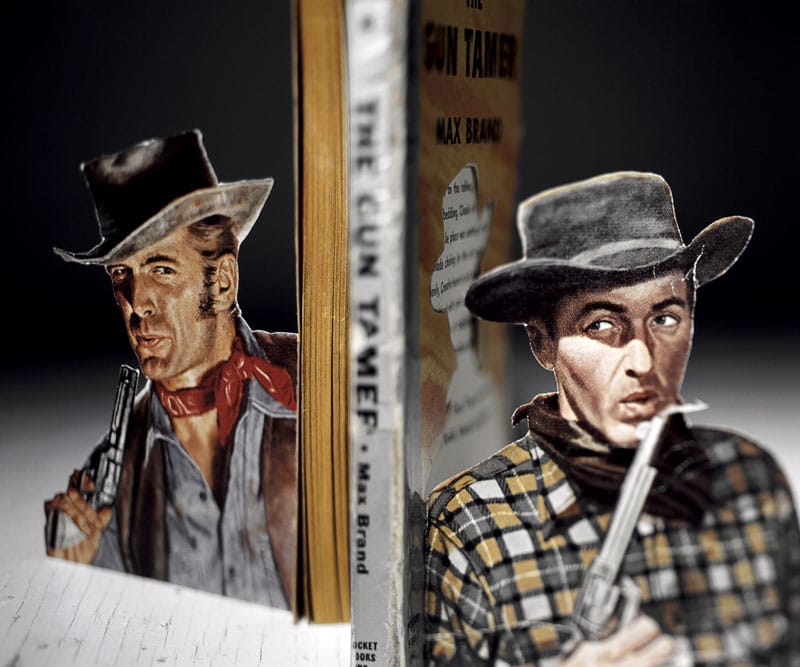
Interview by Nicole Pasulka
How did you come up with the idea to do this specifically with book covers?
I had a fellowship for a series of work that used anatomy books to tell stories from mythology. I had another grant coming up and I just started cutting up a book. When I pulled it, things started popping off the page. I had a paperback novel where one man’s punching another man on the cover. I realized I could make it look three-dimensional. It was like a pop up book. Continue reading ↓
All images courtesy Thomas Allen and Aperture; all images copyright © Thomas Allen, all rights reserved
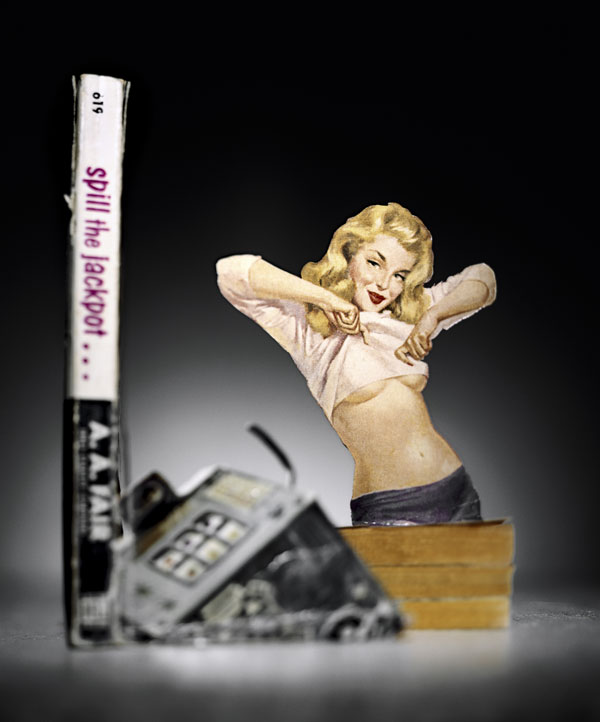
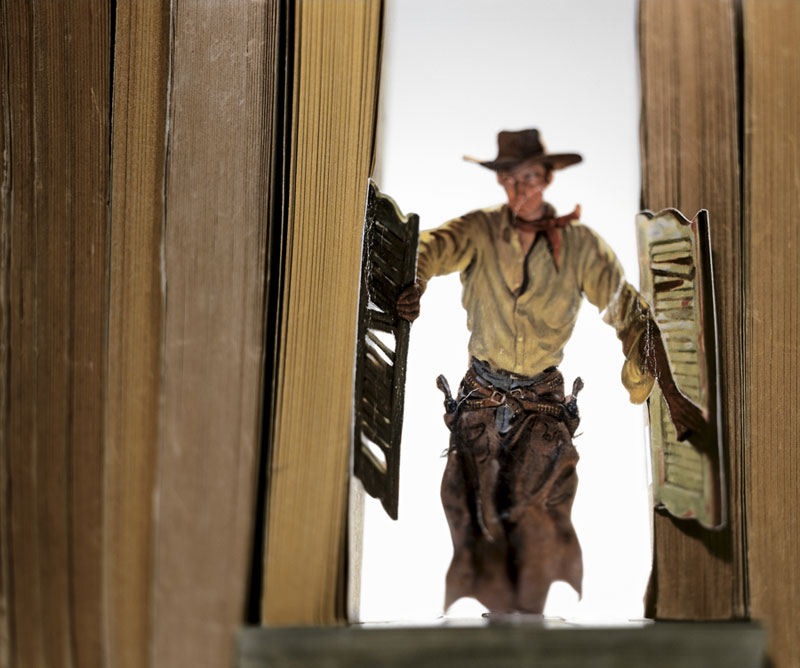

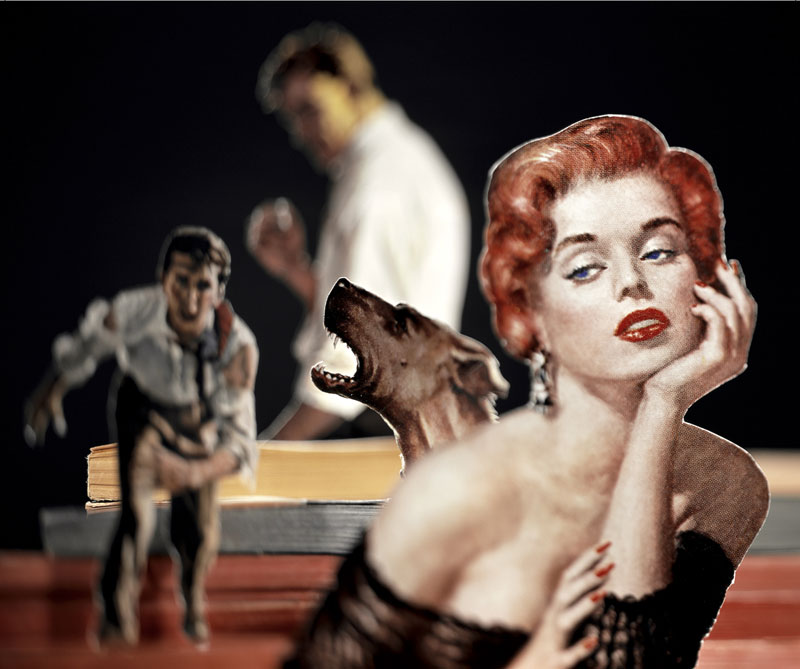
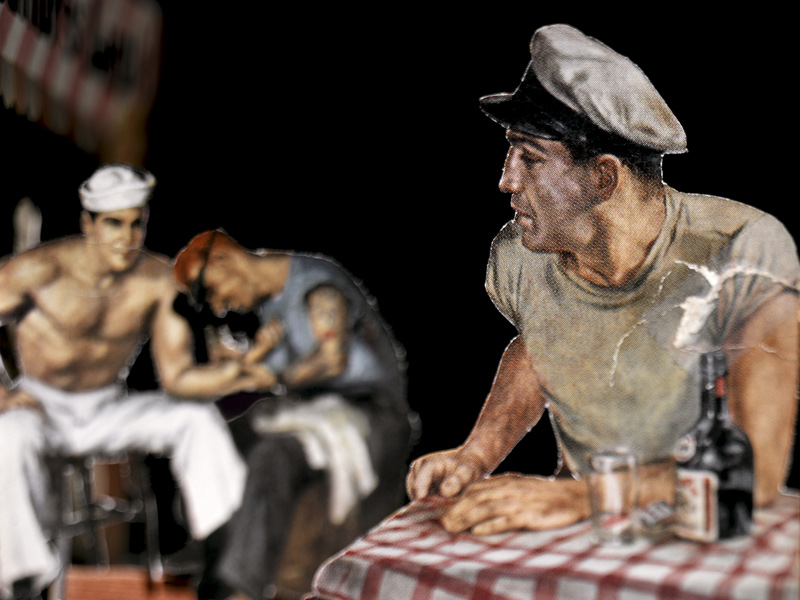
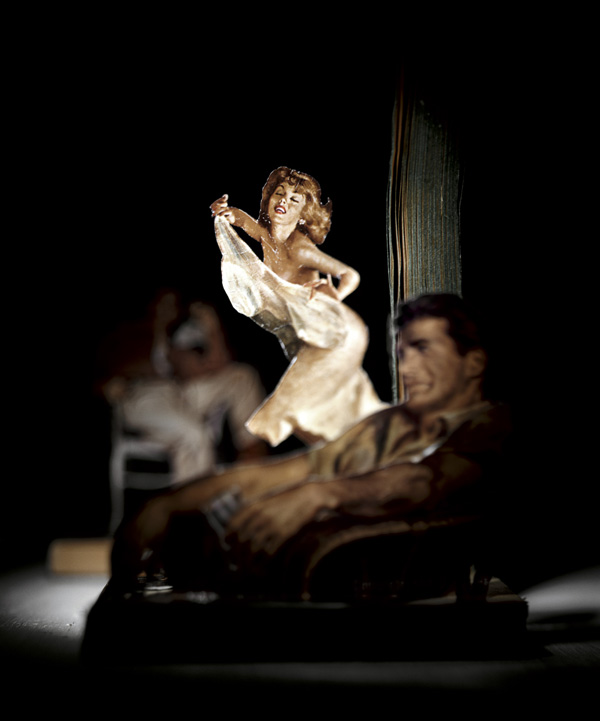
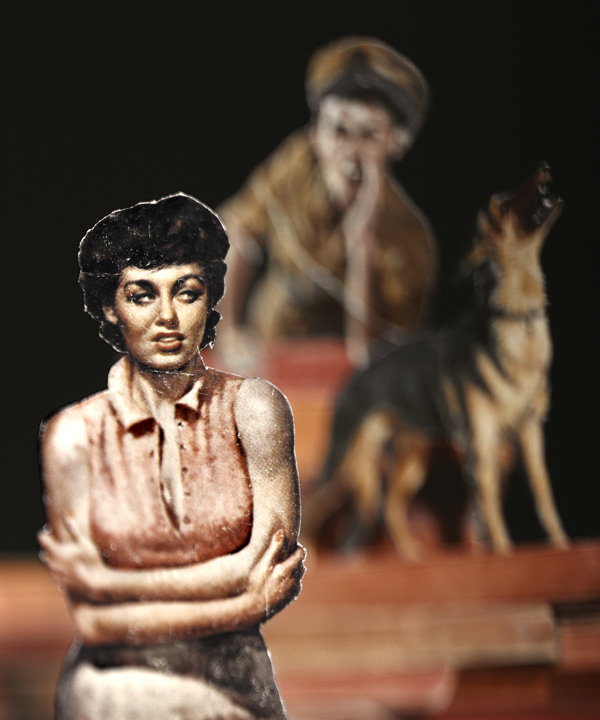
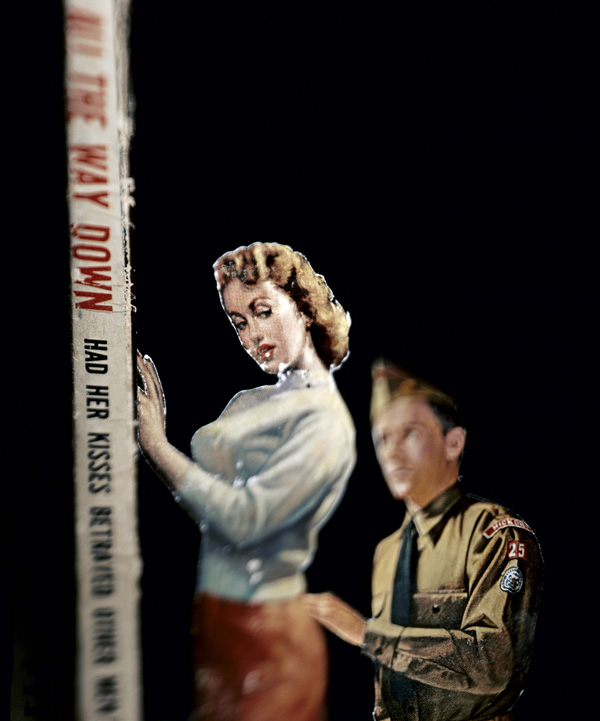
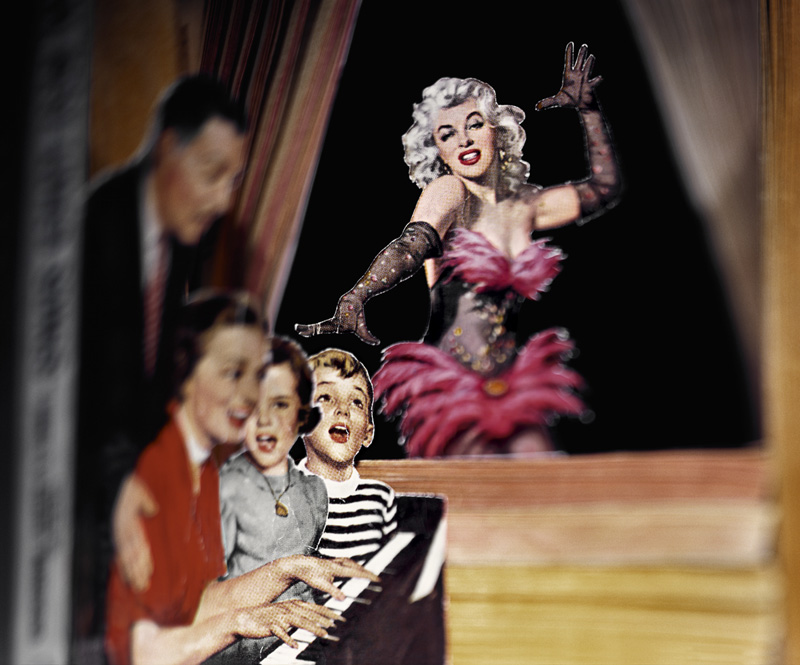
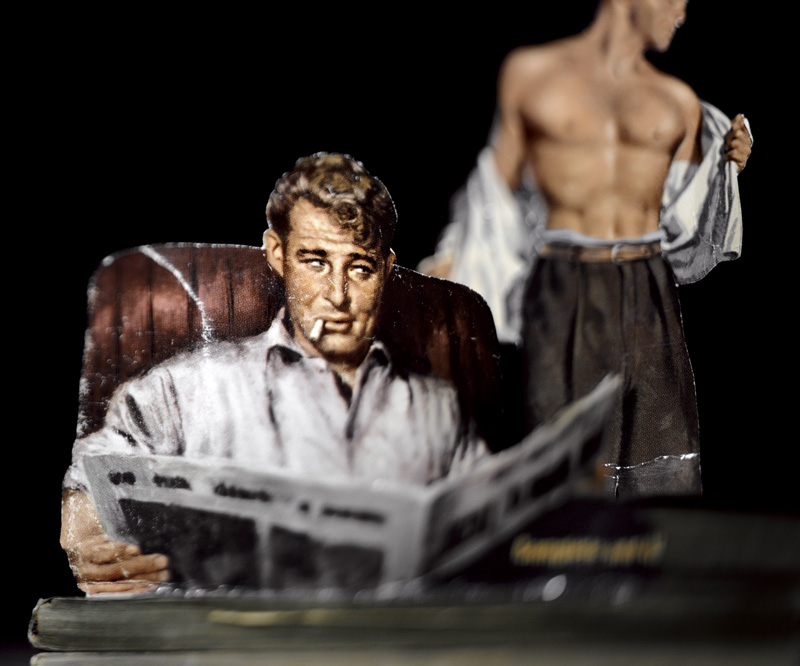
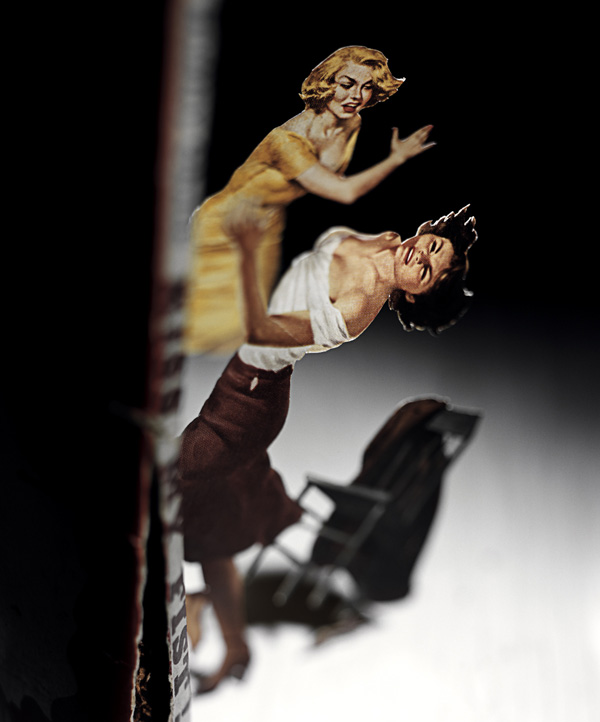
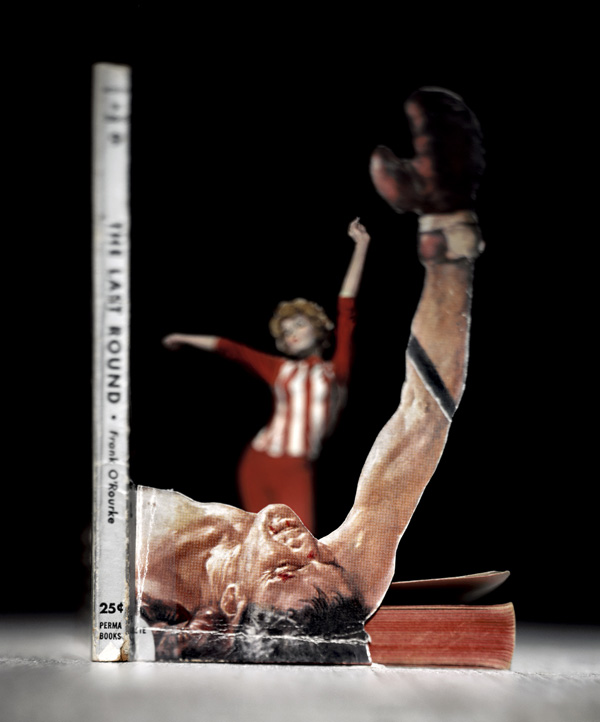
Interview continued
So you cut the covers and the books, and then stage the shots on a black background?
Prior to [this project] I was using Photoshop and making props, cut-outs that I would print onto card stock and cut out and place over the books, and then use light to hide all the tricks. But [for this project] I decided not to use any outside help. I rely on how I cut something and how I light it. As I started using more than one book together, the whole premise of how one story can become another story took the project somewhere else.
Do you see specific stories in the photographs, or are they just alluding to something?
Well, images where one sailor is looking at another sailor and where the cowboys are blowing on their guns and looking at each other, that’s all suggestive. People interpret it the way they want to. I give them one-word titles because, if I have to go on and explain what’s going on, then it’s not working right. And I don’t like “Untitled.”
In your work, are you influenced by pulp as a genre?
I use pulp covers because I like the way they’re illustrated. Around the ‘70s they stopped painting [pulp covers] like that and I avoid those covers because they became too stylistic. I use them because [the characters] look like real people, they’re almost like realist paintings.
How do you track down these books? Do you dig through bookstores?
I used to. There were some great bookstores in Minneapolis. When I moved to Southwest Michigan I tried to use eBay but the bidding would go too high. I found a website that lists every pulp cover available. Someone recently asked me what the site was, and I wouldn’t tell her. I’m not revealing my secret. I look at the entire site and pull the ones I like, copy them and then go to Alibris and Bookfinder.com, and track them down there.
What determines the covers you end up choosing?
Sometimes I have an idea of what I want to do, but most of the time I find things and go, “oh this will work.” Sometimes I have something for a while before I use it. I have an image with a man running that I’ve had for years. I didn’t know what to do with it. I always thought he should be running from something, but finally I looked at it and figured it out.
Do you ever go in looking for specific images or with an idea already in mind?
Lately the stuff I’ve been doing has been more about desire and lust, so I’m looking for covers like that more specifically. A lot of the time, the covers don’t have anything to do with what’s in the book. They’re just made to sell books.
What do you do to bring out the sexuality and suggestion?
The covers are suggestive in the first place. I felt like I could push the suggestiveness into crossing gender lines. Someone asked me if I’d ever thought about using gay pulp covers. I looked at them, and while the lesbian ones are fine and look like other pulp covers, the gay male ones, the way they’re painted or drawn, look much too invented and cartoon-like. I felt like that would be too easy and obvious. The real challenge is to take blatantly straight images and make them sexual.
Do you read the books?
No, I don’t. I started reading one of them. They’re funny to read, but part of the reason I don’t want to read them is that it might influence the way I use them. I use them for visual effect. It’s not about the story. I make my own story from them.
You totally re-imagine these images and create a new world, then?
Oh yeah. I’m the stage director and the light director.
